
Sep '06 - Aug '08
assignment 01: re-parameterizations: a parametric case & design exploration
"the purpose of the exercise is to research a given building envelope (ONL cockpit) to tease out the parameters of design and design thought. the exercise will provide a background in parametric design thinking and to evaluate the relevance of this technology, technique and thought process to architecture in general. the emphasis is on deducing existing and formulating new design systems/structures through which we can further situate, evaluate and explore design logics."
same group of three for this assignment. aside from the building image at the top, all the images shown are the result of our own analysis and production.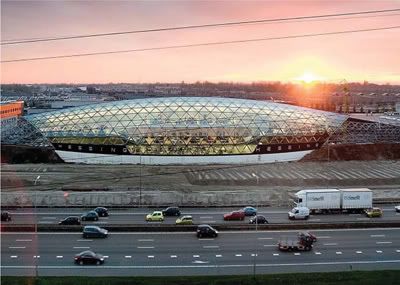
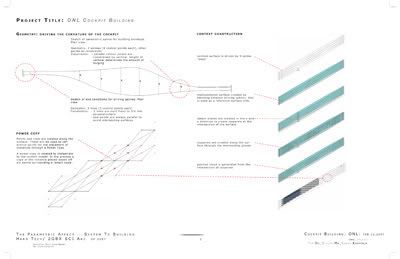
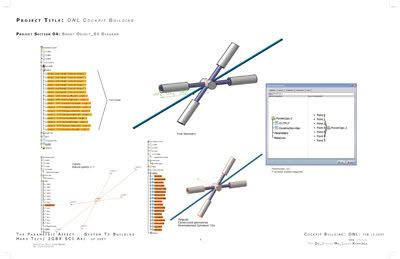
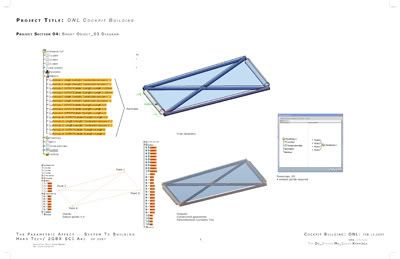
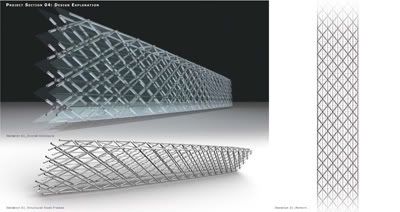
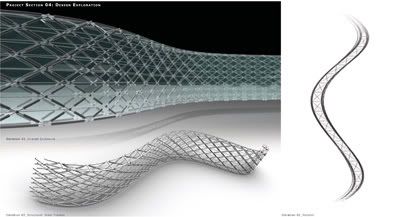
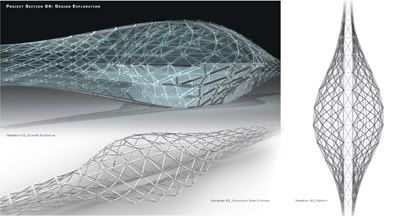
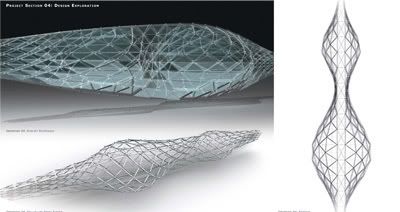



7 Comments
CATIA has rendering capabilities, but it's not very good. the CATIA file was exported as an .iges and rendered in Maya.
once the model was set up, the variations took a very short time (minutes), however, getting the model to the point of being able to output variations took days of banging our heads to understand the logic, struggling through learning the interface, and plugging through hours of redundant tasks like instantiating each 'smart node' onto each point on the surface. apparently, the last task can be automated, but we aren't at that level yet.
um... it's digital project, not catia.
shut up randar.
how technically does it work? you produce your X joint or? and how do you reproduce it upon a surface?
filo, it's treated as two different file types:
1. the 'context' file is the surface and a serious of points.
2. the 'instance' file is the x joint and the pain of glass.
the x joint or 'smart object' has an associated formula which calculates the mean of all the adjacent points, creating a plane (normal) at this point. from that plane you can construct the object and structural members. the length of the individual members from the center point also has a formula that makes it half the distance from the next point, so they meet at the midpoint.
once you construct this 'smart object' you instantiate onto the context surface at each point by selecting all the points around it (see second image at the lower left). once you do this you can manipulate the surface however you want, and the smart object will recalculate each point relationship and adjust accordingly.
as far as i know, catia scripting has based on visual basic?
some of my friends here in aa, drl guys, workin with catia for a while, i think GC has more capacity in terms of c# language...
Catia uses VBA but also has an internal scripting engineering knowledge language (EKL) both have their advantages and their uses. I would be careful comparing the "capacity" of Catia to the "capacity" of GC...b/c in almost all respects the "capacity" of Catia is far greater... but you are correct if all you are saying is that Catia does not directly support C#....
Block this user
Are you sure you want to block this user and hide all related comments throughout the site?
Archinect
This is your first comment on Archinect. Your comment will be visible once approved.